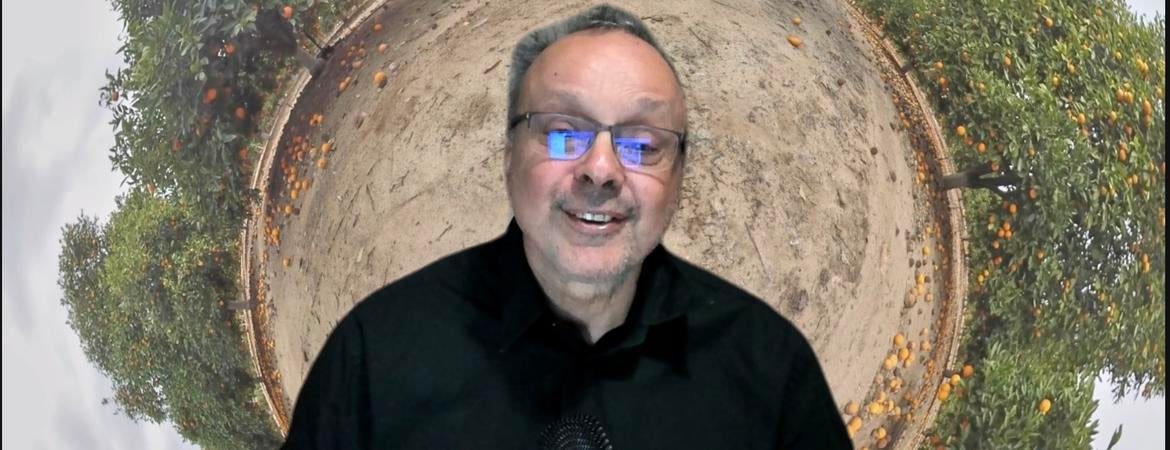College of Humanities, Arts, and Social Sciences

International scholars from around the world met together virtually in November to share and discuss Transnational Film and Audiovisual Art.
The Transnational Film and Audiovisual Art conference and the Audiovisual Frontiers exhibition – with more than 70 pieces of audiovisual art – were presented on Nov. 20 by UC Riverside’s Department of Music and UCR ARTS. Audiovisual art can be described as an intersection of sight and sound featuring language, poetry, music, and cinema. The conference and exhibition gave platforms to works of audiovisual art along with national and international scholars and artists.
The conference also featured the unfinished silent film ¡Que Viva Mexico! (1930). During the conference, it was screened with new music commissioned by Rodrigo Sigal, composer, and director of the Mexican Center for Music and Sound Art. An emblem of audiovisual art and the embodiment of film production and sound in mass culture, the film restored the significance of artwork in cinema. Sigal’s score gives the film new perspectives of time, culture, and art.
¡Que Viva Mexico! is a “seed of today’s transnational collaboration in audiovisual creation and production,” said Paulo C. Chagas, the event coordinator and a professor in UCR’s Department of Music.
“We had a variety of perspectives at the conference, from professional scholars to students,” said Sam C. Shin, a Ph.D. student of Digital Composition at UCR. “Bringing in presenters with different backgrounds allowed us to examine a variety of issues in transnational audiovisual art,” Shin said.
The conference also included the Audiovisual Frontiers exhibition, featuring 70-80 selected works of audiovisual art submitted from more than 125 entries from artists around the world including UCR students and faculty.
“We did a call of works that embraces practically every kind of work combining sound and imaging,” Chagas said. “We will show everything, without judgment and censure.”
“The exhibit is a great way to learn about contemporary audiovisual art if you are new to the medium and also showcases a wide variety of approaches to the form; there is both depth and breadth to the exhibit,” Shin said.
Ethan Castro, a Ph.D. student of Digital Composition, said the conference and exhibition “share the same common thread even though they were exclusively different experiences.”
For more information about the Transnational Film and Audiovisual Art conference, please visit audiovisualmusic.ucr.edu/qvm
For more information about Audiovisual Frontiers, please visit audiovisualmusic.ucr.edu